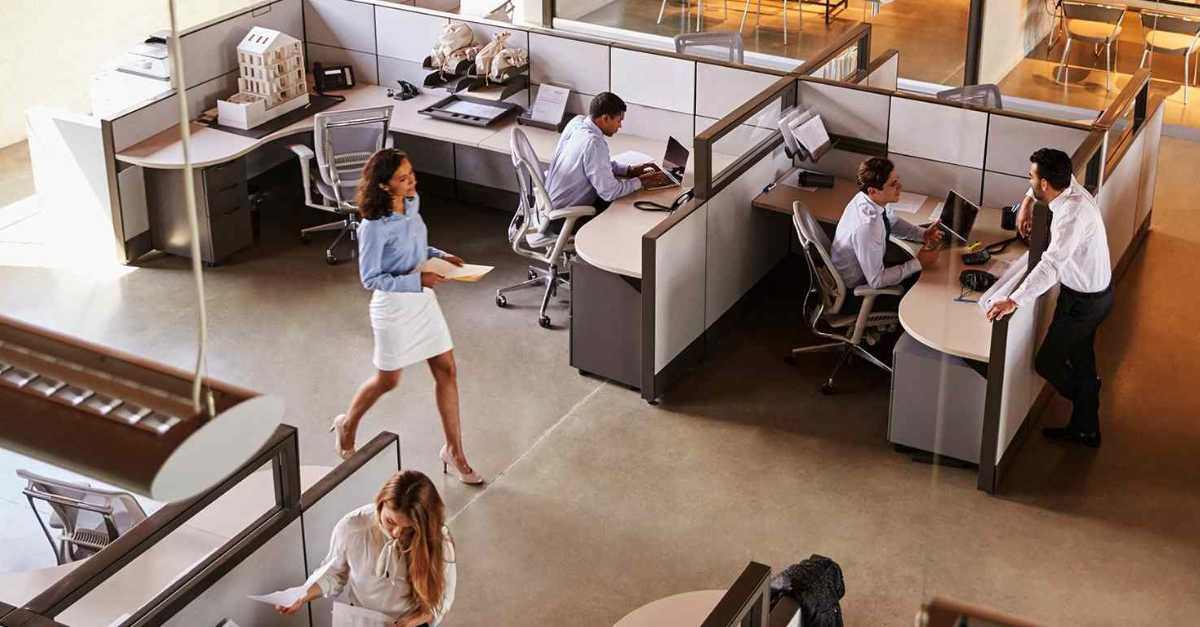
Space Utilization: Everything You Need to Know
Discover how space utilization helps improve visibility into office usage and supports smarter, data-driven decisions to optimize your workplace.
Solutions
Workplace Management Solutions
Real Estate Management Solutions
Maintenance Management Solutions
Energy Management Solutions
Engineering Document Management Solutions
Asset Management Solutions
Automate campus scheduling for classes, meetings, and exams with our EMS software.
Plan and manage conferences effortlessly with EMS software to impress guests and streamline operations.
Boost workplace flexibility and maximize space use with seamless desk and room booking.
Organize workplace or campus events smoothly, creating memorable experiences.
Optimize workspace, manage allocations efficiently, and reduce costs with our space management solutions.
Deliver projects on time and within budget by improving communication, collaboration, and efficiency with our software.
Streamline lease accounting for ASC 842, IFRS, and GASB compliance.
Manage leases efficiently by tracking key dates, analyzing costs, and ensuring compliance.
Centralize data and analytics for better insights, faster negotiations, and revenue growth.
Centralize facility and asset maintenance, automate work orders, and ensure compliance with our CMMS software.
Extend asset life, reduce downtime, and prevent costly repairs with data-driven monitoring.
Prevent equipment failures and extend asset life by detecting and addressing issues early.
Make sustainable, cost-efficient energy decisions by monitoring and optimizing power consumption.
Remotely monitor and control equipment with real-time data to predict issues, boost efficiency, and reduce downtime.
Easily share and collaborate on documents, creating a single source of truth for engineers and contractors.
Manage and analyze assets across their lifecycle to schedule maintenance, reduce downtime, and extend lifespan.
Improve visibility, automate work orders, and ensure compliance for efficient facility and asset management.
Resources
Browse our full library of resources all in one place, including webinars, whitepapers, podcast episodes, and more.
Support
Looking for access to technical support, best practices, helpful videos, or training tools? You’ve come to the right place.
About Accruent
Get the latest information on Accruent, our solutions, events, and the company at large.

Space management is the process of optimizing the use of a facility’s physical space. It involves planning, organizing, and maintaining the use of a given workspace to ensure that it is used efficiently and effectively.
Space management is the process of making the best use of a company or facility's physical space. It involves intentionally planning, organizing, and overseeing the use of a given workspace to ensure that it's used efficiently and effectively. Space management can apply to a wide range of settings, including offices, commercial buildings, manufacturing plants, warehouses, and even residential homes.
By understanding the needs of employees, business owners and company leaders can reorganize their space to maximize its potential. This may include moving furniture, modifying the layout of the space, or implementing new technologies and processes to manage the use of the space. Through these efforts, business leaders can improve efficiency, enhance collaboration, promote employee well-being, and reduce costs.
Space management process is a great investment for businesses of all sizes in all industries. A well-designed, thoughtfully organized space has some significant benefits for both your business and your employees.
Space management can:
A well-designed space can also facilitate collaboration and communication among employees, leading to greater teamwork and a more cohesive work environment. This results in greater creativity and innovation from your employees. And when employees feel comfortable in their workspace, their well-being—and job satisfaction—improve, so retention can improve as a result!
By making the best use of your space, furniture, technology, and energy, you can cut overhead costs. Companies can limit utilities in underused spaces or even eliminate space that proves to be no longer necessary.
In addition, space management can be tailored to specific environments like offices and campuses. Both office space management and campus space management have unique challenges and opportunities that make implementing a dedicated space management system essential.
Download our free Space Optimization Checklist to streamling planning, improve utilization, and make every square foot count.
With real estate typically the second highest expense for an organization and an estimated 40% of workspaces sitting empty during the workday, businesses pay a steep price for underutilized spaces. An office space management system gives visibility into how spaces are being used so you can make better business decisions in the long term.
And then there’s the people piece. Great workplace space management makes for an improved user experience because:
Today’s higher education institutions also face enormous challenges. Aging facilities, changing student expectations, and outdated learning spaces (think massive lecture halls or inflexible furniture) put pressure on colleges to overhaul their spaces.
Space management systems can help. For example, Wake Forest University follows a decentralized model where each department controls its own buildings and spaces. But when the university implemented a space management system, they boosted communication and collaboration while still allowing each group to manage their spaces. Check out the short video below to see more:
At its core, space management involves tracking, understanding, and optimizing the usage of your space. It’s a simple idea, but without a space management system in place, your organization can quickly become overwhelmed. A good system can help you answer questions like:
Effective space management involves considering a wide range of factors to ensure that space is being used effectively and efficiently. Some of the key factors that should be taken into account when managing space include:
Using a dedicated space management software can help you manage many of these factors.
Making the most of your physical and virtual spaces requires significant planning and effort. Here are some of the key space management challenges to be aware of in the office environment.
There are several space management tools that can be used to help organizations optimize their use of physical space. They include:
If you need to optimize the use of your space, but don’t have the time or resources to devote to creating a space management plan or invest in a number of tools, keep it simple. Accruent’s space management software helps you get the most value out of your space and your people.
Space management and space planning are related, but they are not exactly the same. Space planning is the process of figuring out how to best lay out physical space in buildings and structures. Think retailers determining how to display inventory, businesses updating floor plans for better space allocation, or large campuses determining how to optimize maintenance efforts and gain efficiencies across their assets and buildings.
Definitions vary, but facilities management has to do with your physical space inventory, such as maintaining your organization's buildings and equipment. A facility manager uses FM software to create a work order, repair an asset, or perform another maintenance task. Space management, on the other hand, is for both physical and virtual spaces.
Space utilization is a part of space management. Space data helps you answer space usage questions like how often a space is being used, which spaces are the most requested, which spaces are most underutilized, etc. Armed with this information, you can then achieve more efficient use of your spaces.
In short, anyone who has control over where people work or gather in a workplace or campus is responsible for space management at their organization. Roles include:
What does space management look like in practice? Check out a day in the life of an employee whose organization uses a workplace space management system to create safe, flexible employee experiences. (Click here to see the full infographic).
Discover how space utilization helps improve visibility into office usage and supports smarter, data-driven decisions to optimize your workplace.
Are your office spaces used effectively? Explore how a single source of truth for space utilization is critical for monitoring and managing your ...
Optimize space management with data-driven insights. Maximize data efficiency, reduce costs, and stay competitive with smart tech solutions and key ...
Subscribe to stay up to date with our latest news, resources and best practices.
* To unsubscribe at any time, please use the “Unsubscribe” link included in the footer of our emails.